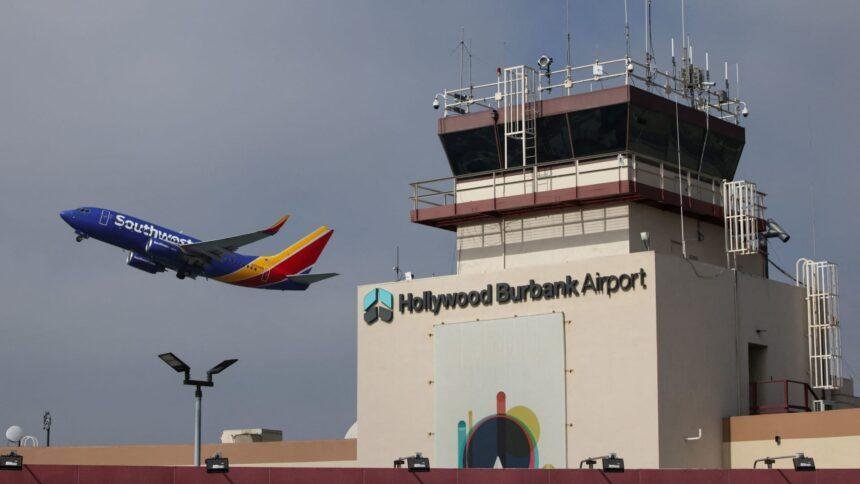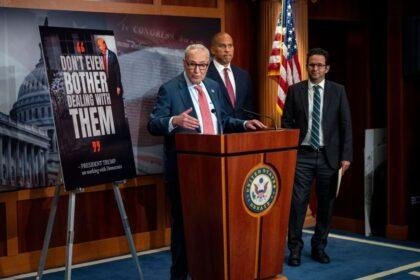Air Traffic Delays Escalate Amid Ongoing Government Shutdown
As the U.S. government shutdown enters its seventh day, air travel is facing significant disruptions, primarily due to staffing shortages in air traffic control. The Federal Aviation Administration (FAA) has reported widespread delays affecting numerous airports across the country, raising concerns about the safety and efficiency of air travel during this critical period.
Widespread Flight Delays
On Tuesday, the FAA issued a notice indicating that many flights were experiencing delays, particularly at major hubs such as Nashville and Newark. At Newark Liberty International Airport, arriving flights were held for as long as 30 minutes, a situation that has become increasingly common as the shutdown continues. Nashville’s air traffic control is also grappling with severe staffing shortages, prompting the FAA to announce a reduction in operations later in the day. Memphis Center is expected to take over approach control to manage the situation.
In addition to these airports, Chicago O’Hare International Airport is facing its own challenges, with the FAA reducing the number of arriving flights per hour. Passengers at O’Hare are experiencing average delays of approximately 41 minutes. The Atlanta Air Route Traffic Control Center is also reporting staffing issues, further complicating the air traffic landscape.
The Impact of Staffing Shortages
The current crisis is exacerbated by the fact that approximately 13,000 air traffic controllers and around 50,000 Transportation Security Administration (TSA) officers are required to work during the shutdown, but they are not receiving pay. According to the FAA, controllers are set to receive a partial paycheck on October 14 for work completed prior to the shutdown. This situation has led to a noticeable increase in sick leave among air traffic controllers, as reported by Transportation Secretary Sean Duffy.
Duffy emphasized the importance of maintaining safety in the airspace, stating, “If we don’t have controllers, we’re going to make sure the airspace is safe. So what we do is we’ll slow traffic.” This approach, while necessary for safety, inevitably leads to longer wait times for travelers.
Historical Context: Lessons from the Past
The current shutdown echoes the events of 2019, when a 35-day government shutdown resulted in significant disruptions to air travel. During that period, the number of absences among air traffic controllers and TSA officers surged as workers went without pay, leading to extended wait times at security checkpoints and air traffic slowdowns, particularly in New York. The pressure on lawmakers to resolve the standoff was palpable, as the impact on air travel became increasingly untenable.
Current Statistics and Projections
Flight tracking website FlightAware reported that over 2,500 flights were delayed on Tuesday alone. This includes approximately 200 delayed flights at Nashville, representing 20% of its total operations, and nearly 500 delayed flights at Chicago O’Hare, accounting for more than 15% of its flights. These figures highlight the scale of the disruption and the ripple effects it has on travelers nationwide.
Weather Complications
Adding to the challenges faced by air traffic control are severe weather conditions affecting various regions of the country. Inclement weather can further complicate flight schedules, leading to additional delays and cancellations. The combination of staffing shortages and adverse weather creates a perfect storm for air travel disruptions.
Looking Ahead
As the government shutdown continues, the FAA and other agencies are under increasing pressure to find solutions that ensure the safety and efficiency of air travel. The situation remains fluid, and travelers are advised to stay informed about potential delays and cancellations.
Conclusion
The ongoing government shutdown has cast a shadow over air travel in the United States, with significant delays and operational challenges emerging as a result of staffing shortages in air traffic control. As history has shown, the implications of such disruptions can be far-reaching, affecting not only travelers but also the broader economy. With the situation evolving, it is crucial for both government officials and travelers to remain vigilant and proactive in addressing these challenges.










